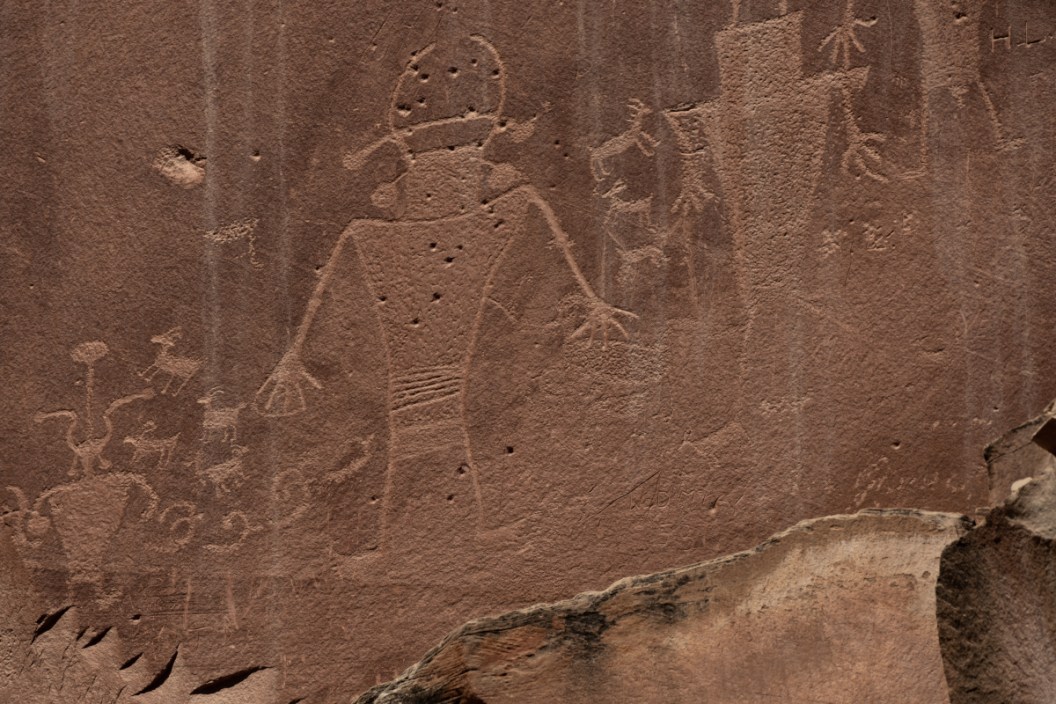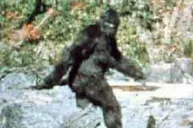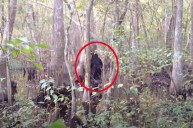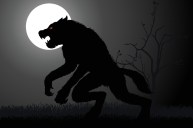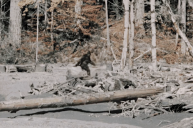The legend of bigfoot is seemingly backed up by American Indian legend.
Everyone knows the legend of bigfoot or sasquatch at this point. Stories of sightings of these allegedly unknown bipedal apes wandering the wildest areas of North America have been around for decades now. Especially in the Pacific Northwest where legends of a wild man and bigfoot sightings seem to be the most frequent.
We cannot say for certain we believe there is an unknown primate wandering the North American forests. However, it is intriguing that stories of a legendary type of ape-man seem to be firmly rooted in Native American legend going back thousands of years.
After all, bigfoot's modern day image in pop culture is not what it was back then. Could Native American tribes have been documenting a real creature they encountered in the forest? Today we will look a little closer at the early Native American perspective on this legend and the intriguing clues they have left behind that may indicate bigfoot is more than just a hoax.
The many Native American Legends of bigfoot.
Today most people believe the Native American term for bigfoot is sasquatch. According to the Canadian Encyclopedia, the name "sasquatch" may have been a mispronunciation of the Salish word "Sesqua" which is pronounced "sess-k-uts." This word was used mostly by the Squamish tribes of the Pacific Northwest. The spelling of the name varies a bit between each tribe, but it seems they are all referring to the same legend. They were said to be supernatural, hairy wild men that were huge in stature. Native American legend often states the sesqua could also move into the spiritual realm. Cue conspiracies that this is the reason bigfoot is so hard to find!
It was journalist J.W. Burns who may have messed up the pronunciation of the word in the late 1920s or early 1930s. According to sasquatch-bc.com, Burns was one of the first to write about Native American legends of the alleged hominoid beast. Burns heard the stories while serving as a teacher on the Chehalis Indian Reservation outside Vancouver, British Columbia. He then wrote an article printed in MacLean's Magazine that introduced a whole new audience to the legends and the name "sasquatch."
While most people associate bigfoot and Native American stories with the Pacific Northwest in places like Northern California, Oregon, Washington State, and north into Canada, there are literally dozens of bigfoot-like creatures deeply engrained in Native American lore across the United States and Canada. For instance, the Chicksaw of Tennessee, Alabama, and Mississippi had the "Lofa." The Cheyenne of the Great Plains had the "Maxemista." The Lakota had "Chiye-Tanka." There was even some greater regional overlap of legends in some areas. The Salish "stick Indians" were described as bigfoot-like, although they were also sometimes described as dwarves. The Chinook had a legend of a mountain monster known as "Skookum." In Alaska, the Ahtna and Athabascan called them "woodman."
Some of these legends bear a closer resemblance to the claims of field researchers and cryptozoology enthusiasts than others. Sometimes these creatures are described as man-eaters and killers. Other times they are helpful forest spirits. Some of the legends are frightening while still maintaining hints of the modern bigfoot legend. For instance, the Lofa is described as more like an ogre, with the name terrifyingly translating to "skinner" or "flayer." It was said to kill humans and have an overpowering smell. That second part sound familiar? Maxemista is also described as having an overpowering odor, as does the Choctaw legend of a hairy man known as "Shampe."
The parallels between the descriptions from these ancient people seem to closely mirror the beasts people have allegedly seen while camping or traveling down old forest service roads. Coincidence? Possibly, let us look at some other clues Native Americans left behind hundreds of years ago.
Native American art showing bigfoot?
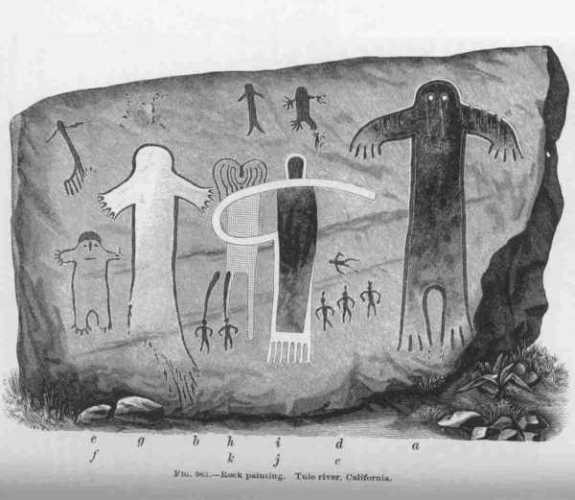
Wikimedia Commons: Garrick Mallery
Some early Native Americans documented what appear to be sasquatch-like creatures in their art, which believers have pointed at as proof of the creature's zoological existence. One of the more notable examples is Painted Rock in California's Thule River Indian Reservation. On this location is an ancient petroglyph created by members of the Yokut as much as 1,000 years earlier.
While the petroglyph is in rough shape these days, mostly due to vandalism, there is no denying the resemblance of its central figure to a certain North American legend. Researchers have determined this drawing depicts a creation story of a sasquatch-like figure. In fact, some have argued the mysterious figures, the largest of which is usually dubbed as the "hairy man," represents an entire family of bigfoots including children. Make of that what you will.
The Painted Rock petroglyph is simply the most notable example of a bigfoot-like creature. There are plenty of examples of Native American petroglyphs throughout the western U.S. that show mysterious figures. Some of which still have not been fully interpreted. Skeptics will point out some of these figures could be known animals like grizzly bears, which is a possibility. The major thing that sets Painted Rock apart from the others is the fact the central figure seems to be "hairy," much like our favorite large friend.
How Native American legend bolstered bigfoot in modern times.
While stories about the existence of a wild, man-like beast in the Pacific Northwest likely circulated for thousands of years before white settlers arrived, the tales did not really take off until the late 1950s. And it was mostly the result of newspaper stories about the large, strange tracks being discovered in Six Rivers National Forest by bulldozer operator Jerry Crew back in 1958. Crew's co-workers started calling the mysterious being who left the tracks "bigfoot" and the story quickly made national headlines, firmly cementing the name in the American psyche. It was only then that people started to point out Native Americans had legends about just such a beast stretching back hundreds of years. Native American legend has been used by believers as backing for the creature's existence ever since. There is no doubt that little tidbit adds an extra bit of believability to the story.
It is worth noting that in 2002, the family of one of Crew's coworkers claimed it was all a hoax. The family of Ray Wallace, claiming their relative was a known practical jokester, made the prints with huge feet carved out of wood. Of course, this did nothing to kill the legend. Mostly because less than 10 years later, the Patterson-Gimlin film took over as the larger piece of sasquatch evidence. Filmed by Roger Patterson and Bob Gimlin in Bluff Creek, California on October 20, 1967, the shaky 16mm footage is often pointed to as the definitive evidence for the creature's existence. Since then, almost every single documentary or article ever written about the beast mentions the film. However, they also mention the tales and legends of the Native Americans who lived in the area as a preface to how the whole legend of bigfoot really began.
Adding additional credibility to what the early legends say, to this day, there are some Native Americans who still firmly believe in sasquatch and continue to pass on the stories told to them by their grandfathers and great grandfathers. Skeptics make the point these legends are just that, stories passed down for generations. Based on the nature of some of these legends, especially the ones of monsters killing and eating humans, you could probably even make an argument Native Americans invented some of the stories to scare their children and keep them from wandering in the dangerous woods after dark.
However, at the same time, we cannot help but wonder if there were some facets of these stories that have a factual basis. One could argue the Native Americans living in the Pacific Northwest 500 to 1,000 years ago had a better connection to the land and an understanding of what lived out there than modern humans today. They were out in those woods every day, which gave them much better odds of spotting something unusual. These were people who lived completely off the land and were likely very familiar with a bear and less likely to make a misidentification.
At the very least we know Native Americans did not make up these stories for attention like people may do today. And that may be what lends them so much credibility today. Much like yeti or the Loch Ness monster, the legend of these beasts did not just appear out of thin air. There is a historical context to it that can be used to defend against the argument the legend is a modern creation done by hoaxers seeking attention. There are enough similarities between modern tales and the ancient legends to make us scratch our head and think a little. Could it be a simple coincidence these legends match up to modern stories? Of course, but there is enough there for people to have doubt. Because of the similarities in the stories, we see the legend of bigfoot surviving for many years to come.
Products featured on Wide Open Spaces are independently selected by our editors. However, when you buy something through our links, we may earn a commission.
For more outdoor content from Travis Smola, be sure to follow him on Twitter and check out his Geocaching and Outdoors with Travis YouTube channels.
NEXT: THE AXIS DEER AND HOW THEY'RE IMPACTING PARTS OF THE UNITED STATES
WATCH
